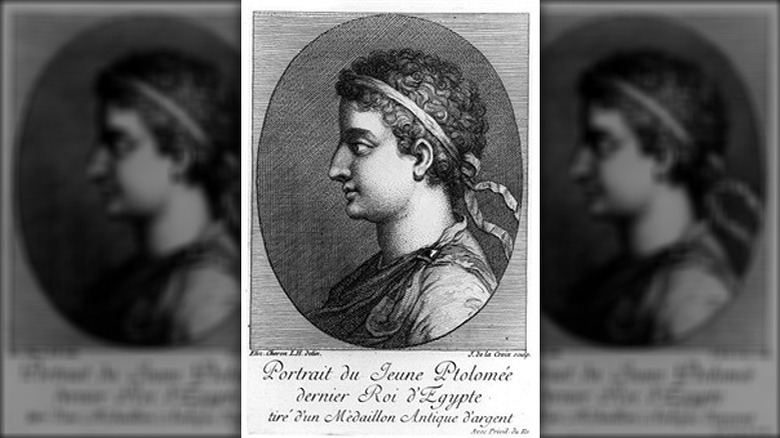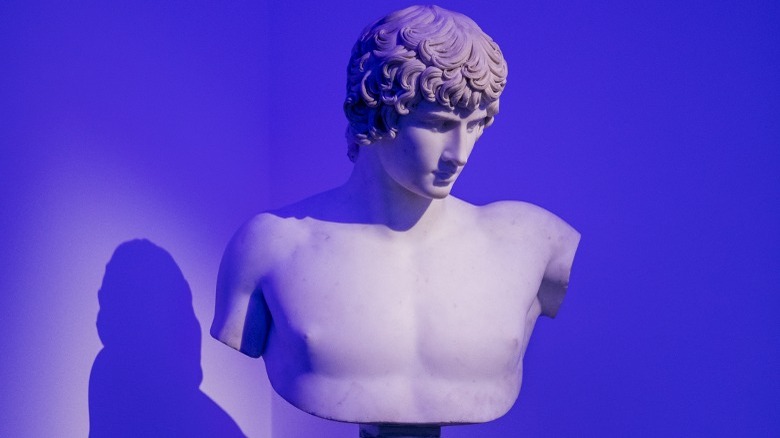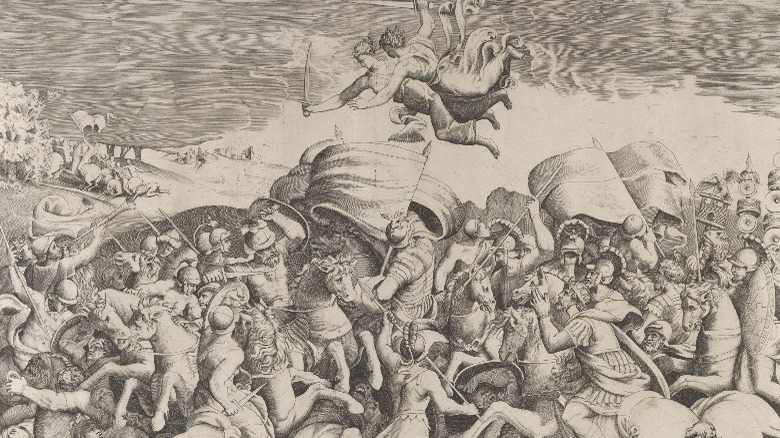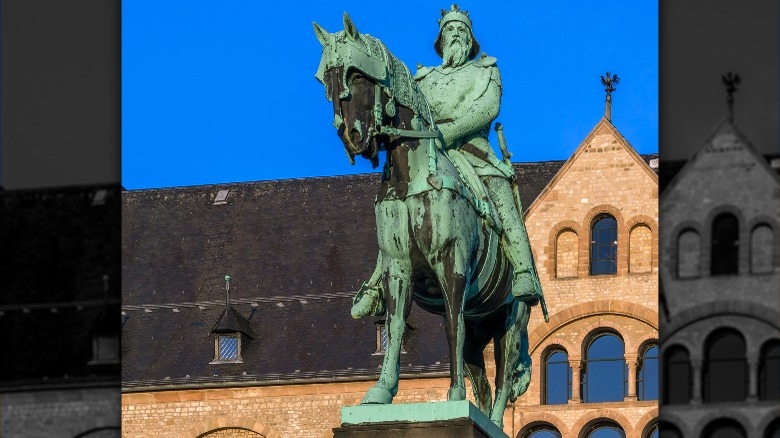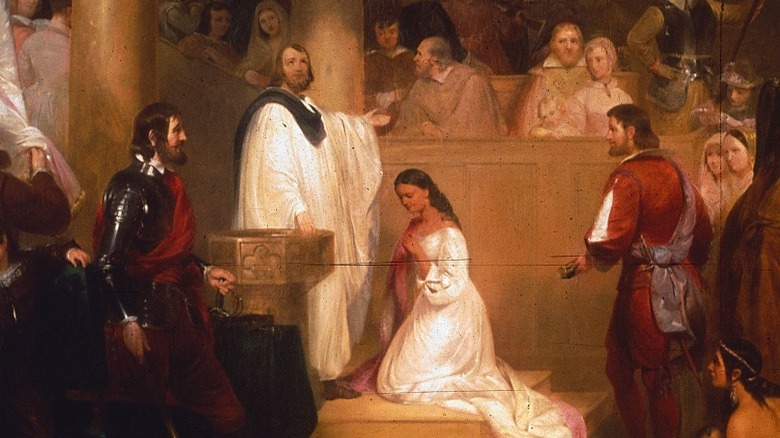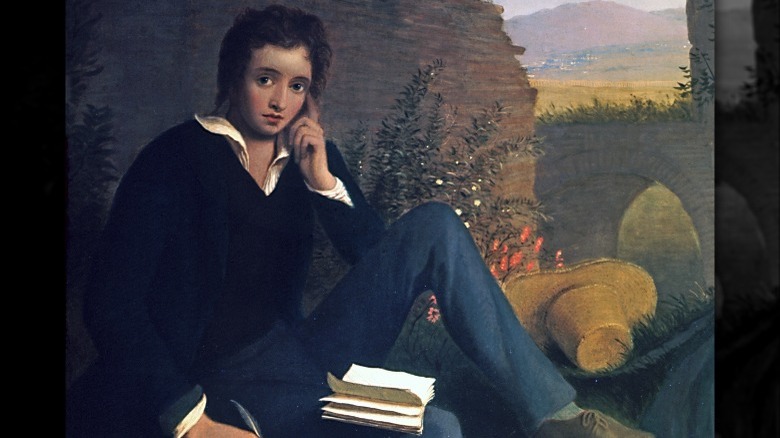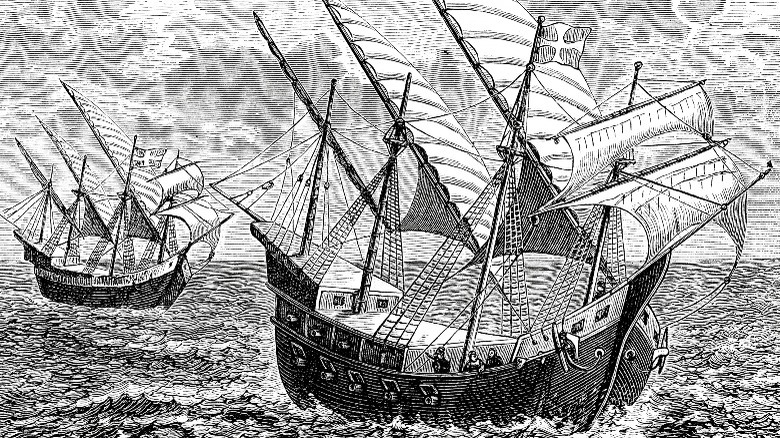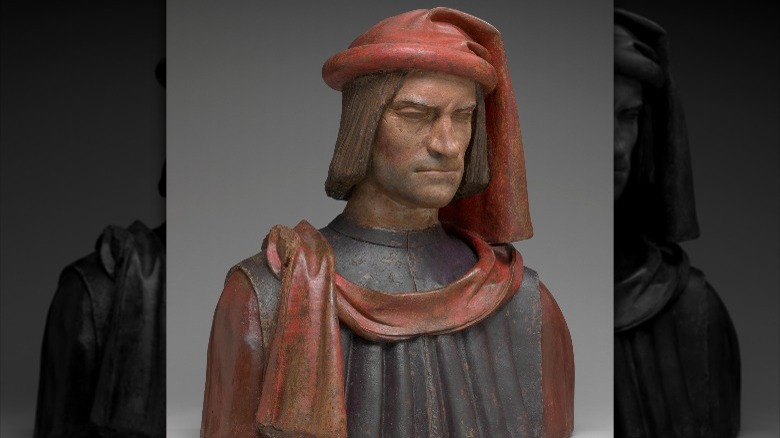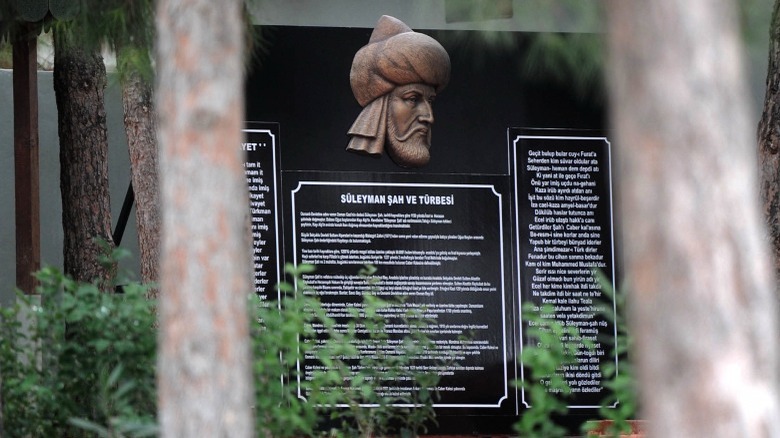Historical Figures Who Died By Drowning
From executions to disease, or just natural causes and old age, sometimes important historical figures' deaths can be as dramatic as their lives were. Undoubtedly, some of the most tragic of these have been those who died by drowning. The list is appallingly long and counts some of the most significant people in history, including emperors, poets, priests, explorers, and even pharaohs. Part of the reason it is such a substantial amount is that for centuries water was the main method for long-distance travel. It was not until the 20th century and the rise of commercial airlines that alternative methods for crossing oceans and large bodies of water were even possible, leaving ships as the only option.
With so many people historically dying from drowning, it's impossible to grasp just how much it has impacted the world. Who knows how many brilliant potential scientists or artists perished at a young age from drowning, never being able to leave their lasting imprint on the world? Looking back thousands of years, these are some of the most important historical figures who died by drowning.
Qu Yuan
Today, the annual Dragon Boat Festival is an extremely popular Chinese festival that is celebrated globally. Throughout the world, people gather yearly to race against each other in boats emblazoned with images of dragons and to celebrate Chinese culture. Though you might think the festival celebrates racing or some ancient story involving fire-breathing dragons, it actually revolves around the legend of Qu Yuan. Qu Yuan was a poet and counselor during the Warring States period of Chinese history.
As the ancient legend goes, Qu Yuan was a longtime counselor to the Chu state but eventually ran afoul of the new emperor, Qingxiangwang. The king exiled Qu Yuan from his homeland to live south, where he may have written the poem "Li Sao." The poem tells the story of a man who is banished from his home by evil spirits plotting against him, seemingly mirroring the story of Qu Yuan's life. From his exile, Qu Yuan continued to write poetry but is said to have drowned himself upon hearing about the fall of Chu.
The annual Dragon Boat Festival is held in Qu Yuan's honor, commemorating the original search for his body in the Miluo River. In addition, following his death, a dragon is said to have stolen the offerings left for Qu Yuan's spirit, hence the inclusion of dragons in the festival. Qu Yuan lived more than 2,000 years ago, making this celebration one of the oldest in Chinese history.
Ptolemy XIII Theos Philopator
The drowning of Pharaoh Ptolemy XIII Theos Philopator occurred in 47 BC. At a young age, Ptolemy XIII became the pharaoh of Egypt, however, he had to rule with his older sister/wife Cleopatra VII (yes, the famous one). However, they were driven apart by Ptolemy XIII's cohorts, and Cleopatra fled into exile.
At the same time, Rome was undergoing a civil war involving Julius Caesar and Pompey. Pompey sought refuge in Egypt with Ptolemy's faction in Alexandria, but his decision ended up being disastrous when the Egyptians murdered Pompey in an attempt to curry favor with the powerful Caesar. Yet, Caesar did not agree to an alliance with Ptolemy, and instead, Caesar had the fleeing pharaoh brought back to his court in Alexandria. At the same time, Cleopatra also appeared before Caesar in Alexandria, becoming his lover.
This did not sit well with Ptolemy, and soon his Egyptian followers were at war with Caesar. In the end, it was Caesar who was victorious over the Egyptians. It is thought that Ptolemy drowned in the Nile River fleeing Caesar, who would become the new pharaoh of Egypt, with Cleopatra as his queen.
Antinous
Roman Emperor Hadrian had a wife, Vibia Sabina, but he was more interested in pursuing sexual relationships with his male companions rather than his spouse. One of them was a young Roman man named Antinous, who may have met Hadrian when he was just a teenager when the emperor visited his hometown following an earthquake. Hadrian was more than 30 years Antinous' senior, but sexual mores of that era in Rome actually made that a more common relationship than one might think. Hadrian paid for Antinous' schooling, after which Antinous came to live with him at his villa in Tivoli. They lived together for around five years as a couple, traveling together around Italy, Judaea, Syria, and Egypt, where their relationship would come to a mysterious end.
It's unclear how he died, but Antinous is thought to have drowned to death in the Nile River in 130. He may have been sacrificing himself to help heal Hadrian of various illnesses, or he may have accidentally drowned, as the historical records contradict themselves. Either way, Hadrian had Antinous deified and built the city of Antinoöpolis on the banks of the Nile in the year 130, naming it in honor of his late lover and companion in his honor. Today, many see Antinous as a gay icon from Roman history, and his memory still lives on strong.
Marcus Aurelius Valerius Maxentius
The story of Marcus Aurelius Valerius Maxentius, a disputed Roman emperor in the third century, is complicated. It begins with his father, the former emperor Marcus Aurelius Valerius Maximianus. Maximian ruled Rome for nearly 20 years before he abdicated in 305. At that point, a tetrarchy of three men took over, but Maxentius was not one of them. This upset him, and he soon started trying to foment an insurrection against Severus, which worked.
Maxentius was proclaimed the new emperor — but tried to make it less obvious by giving himself a different title, princeps. He eventually started to call himself Augustus and had one of his enemies in the original ruling tetrarchy put to death, which upset some important and powerful people. The abdicated emperor Maximian decided he wanted to regain his former power, and tried to take over from his son, but failed.
Though Maximian died in 310, the fight against Maxentius was continued by the former's ally Constantine, who happened to be the brother-in-law of Maxentius. The pair's forces met at the Battle of Milvian Bridge in 312 (pictured). Maxentius was fleeing Constantine's army when the bridge collapsed, and he drowned. Who knows what worse fates may have been in store for him had he survived and been captured?
Frederick Barbarossa
Born in 1122, Frederick I, more commonly known as Frederick Barbarossa, served as the Holy Roman Emperor for 35 years from 1155 until his death in 1190. Prior to serving as emperor, Barbarossa was the King of Germany and Italy, having first ascended to the German throne in 1152. His time as ruler was clouded by domestic disputes and challenges to his authority. He wanted to return his kingdom back to its glory days of centuries prior and started working to restore imperial prestige and authority.
In 1154, Barbarossa and his army invaded Italy to retake it from the Normans and he was successful enough to be named King of Italy and Holy Roman Emperor. However, he soon was forced to retreat and would not return for three years, after which he engaged in a long-running dispute with the papacy leading to his excommunication, which was not resolved until 1177.
In 1189, Barbarossa headed to Jerusalem to take part in the Third Crusade. He died drowning in the Saleph River, which is located in present-day Turkey. Today Barbarossa is remembered for his attempts to reunify the Roman Empire, and for his struggles with Pope Alexander III.
Alexander Whitaker
Most people are probably familiar with the story of Pocahontas, the famous Powhatan Native American. However, much less familiar is the story of Alexander Whitaker, the man who may have baptized her and performed her wedding ceremony. Whitaker was a clergy member born in Cambridge, England, in 1585, but he came to the New World after graduating college. Traveling with Thomas Dale, Whitaker first arrived in the Virginia Colony in 1611, eventually becoming the head minister for the Church of England in the colony. His nickname was "the Apostle to Virginia," and he was a Puritan, like his father.
After arriving, it is thought that Whitaker was potentially the minister who performed not only the marriage between Pocahontas and John Rolfe but could have also been the one to have baptized her (pictured). But that is disputed. There was another reverend in the colony at the time, and the historical record is not clear who definitively performed the ceremonies, or indeed if it was the same person performing both. Whitaker could have performed both, either, or neither of the ceremonies, but his high position and nickname make it very possible. In addition, it is known that Whitaker was a mentor to Pocahontas, giving his claim even more viability.
Whitaker died a few years after Pocahontas' marriage would have taken place, in 1617, when he drowned in the Henrico area. His legacy still lives on today for his achievements for the church in Virginia and for his connection to Pocahontas.
Percy Bysshe Shelley
By the time Percy Bysshe Shelley was admitted to University College, Oxford, he had already published two novels. Born in 1792, Percy quickly got himself in trouble in college due to his atheistic writings and found himself expelled within a year. He soon got married, but the relationship was troubled seemingly from the beginning, though he had two children with his wife. However, Percy soon became infatuated with Mary Wollstonecraft Godwin. Due to hostility from Mary's father, they ran off to Europe, and it was there that Mary became pregnant with her and Percy's first child.
Upon their return home, Percy continued to write, and so did Mary. Always one to write about topics before their time, Percy also published a book on vegetarianism. Mary's biggest claim to fame was the 1818 novel "Frankenstein," which became one of the biggest books of the 19th century.
The couple moved to Italy a few years after finally getting married in England, but tragically both of their children died while they were there. Then, in 1822, Percy drowned under somewhat questionable circumstances, with his body washing up on shore. This has led some to suspect he had been murdered, though no one was ever charged, and today it remains a tantalizing mystery.
L'Inconnue de la Seine
One of history's most intriguing mysteries is that of "L'Inconnue de la Seine," or "the Unknown Woman of the Seine." The conundrum dates back to the late-19th century when a woman's body was pulled from the River Seine in France. Nobody knew who she was, where she was from, or least of all what she was doing in the river and why she had died. It was thought that she had drowned, but everything else was a complete enigma.
Even with her body being put on display, which sounds unusual but for the time was actually a normal means of identifying unknown bodies, no one recognized her. At one point, a "death mask" was made of her face, and this is where the story takes an interesting turn. The cast of the unknown woman's face circulated far and wide among artists, and her story even influenced books like Richard le Gallienne's "The Worshipper of the Image." Nobody knew who exactly they were drawing or writing about, but something about her face was enthralling.
Here's where the story gets even more bizarre. Many people today are actually familiar with the unknown woman's face, they just don't realize it. Since the mid-20th century, the face of "L'Inconnue de la Seine" has been on the CPR-practice doll known as Rescusci Anne. Hundreds of millions of people have locked lips with the unknown woman's face, leading some to call her the most kissed woman in the world.
Constantine W. Buckley
He might not have the name recognition of politicians like Abraham Lincoln or James Buchanan, but Constantine W. Buckley was an important figure in 19th-century Texas politics. Buckley was born in 1815 in North Carolina and came to Houston in 1838. A failed businessman, Buckley became a clerk for the State Department in Texas before becoming a prominent lawyer. After working as a lawyer Buckley ascended to a judgeship, but he only served for a short time before returning to the private sector.
In addition to his time as a lawyer and judge, Buckley also served in the Texas House of Representatives. He tried to get elected to be a justice on the Texas Supreme Court but failed in his only bid. Still, he served more terms in the Texas legislature. Including as the Speaker of the House for two brief periods in 1861 and 1863, following Texas' secession from the Union during the Civil War.
In 1865, Buckley died from drowning in the Brazos River when he was 50 years old. In 1965 the state created a monument in his honor in Richmond, Texas. It commemorates his service in the Texas Confederate Legislature.
Bartolomeu Dias
One of the most important explorers of all time was Bartolomeu Dias. Dias is most well known for being the first European to sail across the Cape of Good Hope on the tip of southern Africa. At the time, trading routes between Asia and Europe were largely confined to overland routes. This meant that the trade could be shut down at any time by local governments, like the Ottoman Empire did in 1450. By opening up a sea route around Africa, Dias opened up new possibilities for global trade, which would soon flourish within a few decades.
Dias disembarked from Portugal in August 1487, and sometime in 1488 between the last week of January and the first week of February, he rounded the Cape. He did not make it very far up the eastern African coastline before his crew urged him to turn back, but by then Dias had already ensured his name was etched into the history books, and that the world would never be the same.
Following his return to Portugal in late-1488, Dias continued to explore, and he served as a consultant to another famed explorer, Vasco de Gama. In 1500, Dias drowned after a shipwreck upon his return to the Cape of Good Hope, and he was lost at sea. It was a fitting, if tragic, end for one of history's greatest explorers.
Piero the Unfortunate
Piero di Lorenzo de' Medici, or Piero "the Unfortunate," was another Italian ruler to die from drowning. Piero only ruled Florence for a few years in the 1490s before losing his position, and his nickname "the Unfortunate" is a testament to his rough rule. In comparison, his father Lorenzo de' Medici was known as Lorenzo "the Magnificent," owing to his more successful rule. Piero was born in 1472 and became ruler of Florence following Lorenzo's death in 1492. Sadly for Piero, he was nowhere near the statesman his father had been, and his rule was anything but magnificent.
In just two years, Piero was ousted and exiled after making a poorly conceived agreement with Charles VIII, the King of France, who was leading an invasion against him. It wasn't the French who chased Piero from the city, the disaffected Florentine population did that, but he never stopped trying to return to the city. However, his plots all failed, and he died less than a decade after being pushed into exile. He drowned to death in the Gargliano River in 1503, leaving behind a tragic legacy.
Suleyman Shah
Even though he drowned to death nearly 1,000 years ago, the tomb of Suleyman Shah is still causing problems today. It has less to do with Suleyman Shah than it does with his descendants, who would go on to found the Ottoman Empire. Suleyman Shah is the grandfather of Osman, the first Sultan of the Ottoman Empire. At its peak, the Ottoman Empire ruled over all of Syria, including the area of Suleyman Shah's tomb near the Euphrates River. Suleyman Shah drowned in 1236, and the Ottoman Empire controlled Syria well into the 20th century, so for many years the location of the tomb was not a problem.
However, that all changed following the First World War when the Ottoman Empire was broken up and Syria became a separate country. Officially, Turkey was granted sovereignty over the tomb, which was on Syrian Mandate territory, according to the terms of the 1921 Franco-Turkish Pact. In the early-'70s, the tomb was relocated due to a flood to a nearby site. That was until 2015, when Turkey moved the body from its second location to an undisclosed site. This followed provocations from ISIS during the Syrian Civil War, which inflamed tensions. The Turks kept the remains in Syria, hoping to eventually return them to his official resting spot.


